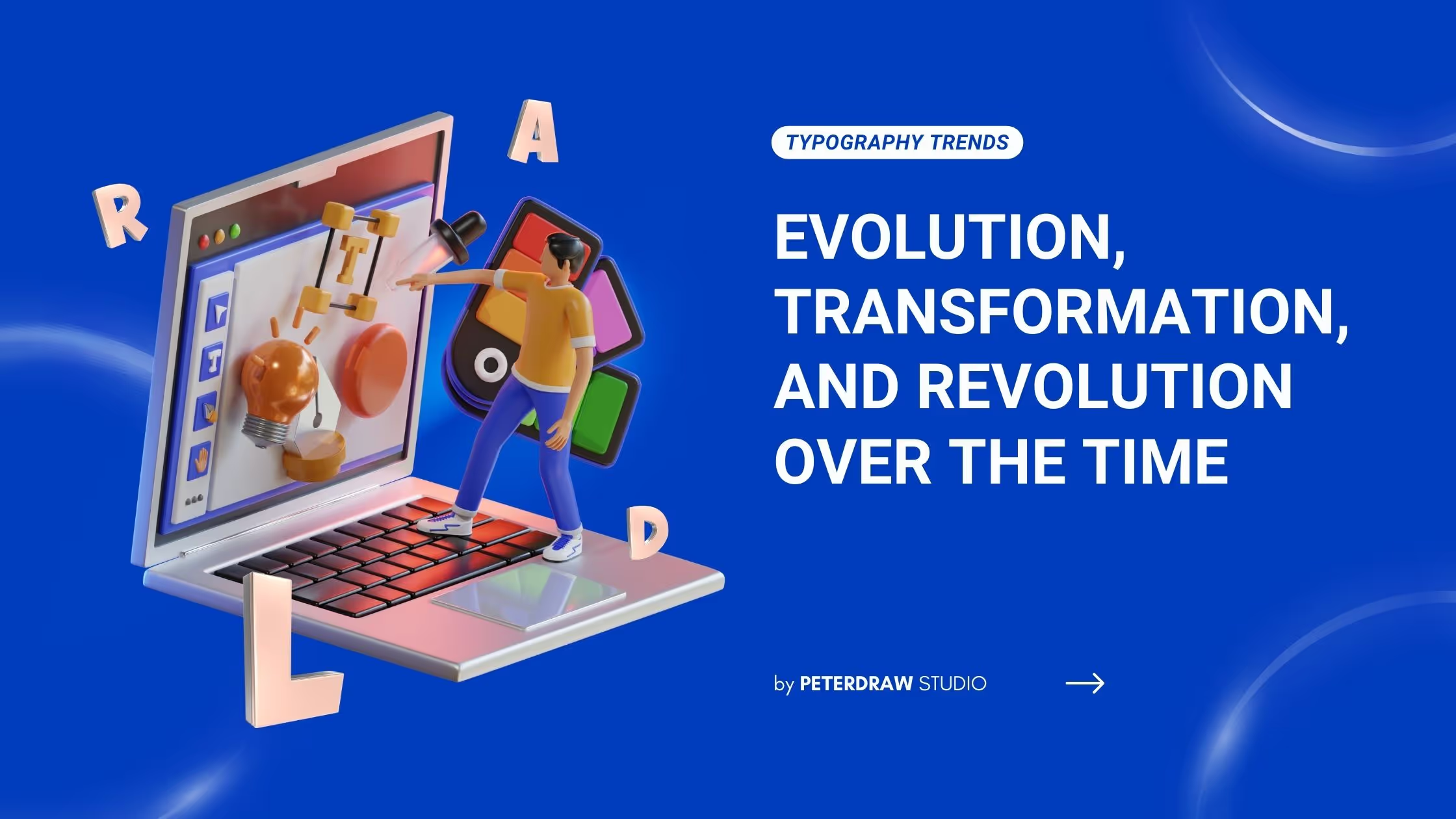From Web2 to Web3: How Web3 in Web Design Is Redefining Online Ownership
See how web3 in web design blends blockchain, wallets, and UX to create secure, decentralized, user-first digital experiences.

As one of the design elements, typography has its own ups and downs in its evolution and transformation journey. The change in technology, culture, and aesthetics influences the typography trends over time. It impacts design, especially in its readability and the way of communication. Exploring typography trends from time to time can help understand the trend better and create a new trend in the future.

The evolution of typography is like the development of human language – it adapts, transforms, and revolutionizes to meet the needs of its users, continually finding new ways to communicate effectively and beautifully.
Since humans became familiar with written communication, it marked the beginning of the typography trend. A whole civilization contributed to a new trend over decades or centuries. These are some periods that had a major influence on changes in trends of typography.
Ancient typographic forms are not like the typography that is generally present today. The earliest forms of writing are more like pictographic symbols, including hieroglyphics and cuneiform inscriptions. They came from the earliest ancient civilizations, such as Egypt, Mesopotamia, and China.
The typography forms changed when the Romans introduced serif letterforms. It’s believed to have originated from brush strokes used in painting letters. The Roman square capitals (Capitalis Monumentalis) became a classic style that influenced Western typography for centuries. It is also known as the ancestor of modern serif fonts.
A revolution in typographic trends emerged in the mid-15th century. Thanks to Johannes Gutenberg’s invention, a movable type, Blackletter, or Gothic script typeface emerged. The typeface resembled the handwritten script of the time, characterized by its dense, dark appearance, with sharp, angular lines and elaborate flourishes. Gutenberg’s invention also made it possible to book mass production for mass communication.

Unfortunately, Blackletter typefaces were quite challenging to read. Therefore, the trend shifted in the late 15th century toward more readable typefaces. Typographers like Nicolas Jenson began designing typefaces inspired by Carolingian minuscule, which was influenced by ancient Roman letterforms. These early humanist typefaces laid the groundwork for Roman and Italic styles.
The Industrial Revolution changed typography trends to great lengths. Since it brought innovation in printing technology, it led to an explosion of typographic styles. Requests for new typefaces came continuously, marking this period for rapid growth in typeface varieties. It also was a period of the emergence of Display types, including slab serifs and ornate decorative fonts for commercial needs, such as posters and advertisements.
The era of ornate and decorative styles died down as the period entered the late 19th century. The trend shifted towards simple, functional, and abstract typefaces. Furthermore, this period embraced clarity, geometric forms, and the idea that form should follow function. Sans-serif typefaces gained popularity, epitomized by the Bauhaus and Swiss Design movements. Fonts like Helvetica, designed in 1957, became emblematic of this clean, minimalist approach.
Turning to the era of postmodernism, a period of rebellion from the clean, neat, and minimalist style. This period embraced diversity, complexity, and contradiction. A resurgence of decorative and eclectic styles was reflecting postmodernism’s diversity. Experimental fonts are more commonly created and invented by breaking conventional rules, especially in their application to design.
The advent of personal computing and digital design tools contributed to the typography revolution. Designers more easily create and distribute the fonts they create. Fonts also could be modified easily, leading to a proliferation of unique typefaces. Besides, web typography was a crucial additional consideration because of the rise of the internet.
Internet access is growing rapidly and has become common in the 21st century. Web fonts are not just a consideration but have become a crucial part of design. It is for readability and user experience. Not to mention optimizing the display on various screen displays, web fonts allow typography to adapt to various screens and devices.
However, the cycle always comes and goes. The recent typography trends include a revival of vintage and custom hand-lettered fonts, reflecting a desire for authenticity and personalization. Variable fonts, offering customizable weights and styles within a single font file, represent the cutting edge of typographic technology.
No one ever knows what the future will offer and bring to the trend of typography in the future. However, looking at current technological advancements, cultural shifts, and design innovation, here are some trends to anticipate.
How did the Industrial Revolution impact typography trends?
The Industrial Revolution brought innovation in printing technology, leading to an explosion of typographic styles and the emergence of display types like slab serifs and ornate decorative fonts for commercial needs.
What is the significance of variable fonts in modern typography?
Variable fonts offer customizable weights and styles within a single font file, enhancing design flexibility and efficiency across different media and devices.
How does web typography differ from traditional typography?
Web typography focuses on readability and user experience, optimizing display across various screens and devices, and often involves using web-safe fonts and responsive design techniques.
Typography trends evolve with technology and culture, weaving a narrative through aesthetics. Historical serifs and modern lines blend, influencing the innovative digital future. Designers and typographers anticipate typography that communicates and embodies the spirit of its era, ready to adapt and transform.